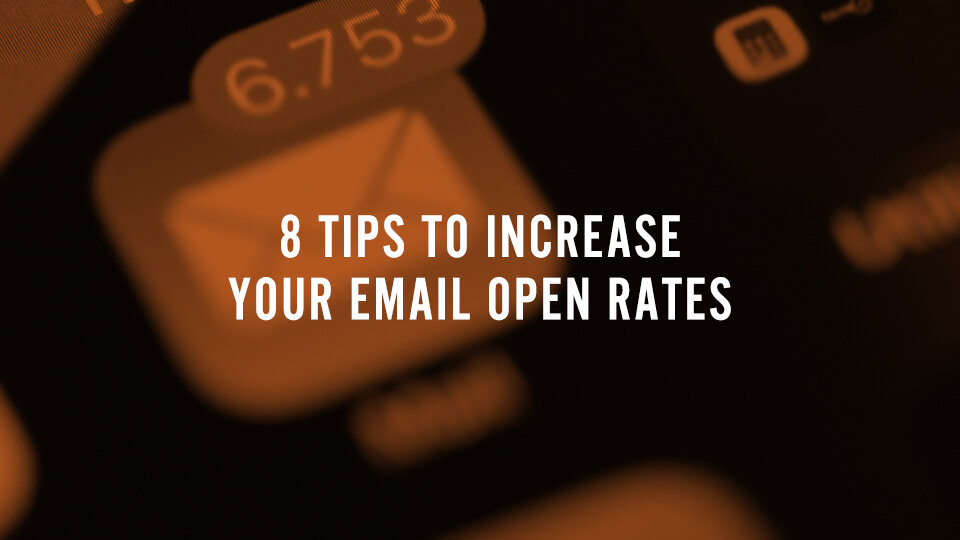8 Tips to Increase Your Email Open Rates
By The A Group
Email is more relevant now than ever before!
Even in the midst of competing new technology, email delivers a strong return on investment. For every $1 you spend on email marketing, you can expect an average return of $36, according to Litmus, The ROI of Email Marketing. If that’s not enough to inspire you to prioritize email marketing for your organization, here are a few other impressive facts:
Email lists belong to you. Social followers do not.
You can lose all your social media followers if any given social network decides they don’t like your message or stance. I have had clients who have lost hundreds of thousands of followers because their account was shut down by Facebook, Twitter or even the government, as is the case of a Russian ministry I work with.
While you rent space on social networks, you own your email list.
Email reaches your people quickly
Sure social media can turn on the charm, but based on Constant Contact data, an average of 21% of emails are opened within the first hour.
Email works well on mobile
Email open rates from mobile devices have grown by more than 100 percent since 2011. And mobile devices account for about 60 percent of email opens. (Source: Constant Contact)
For that reason, if you want heavy readership and high open rates, it’s crucial that you think through your email strategy and not just haphazardly send emails. That’s a quick way to see your unsubscribe rates increase
Now that you know how effective email marketing is, here are 8 tips to increase your email open rate:
What is the purpose of the email?
You don’t want to tire your recipients with emails that are not intentionally crafted and with a clear objective. Make sure you understand exactly what the email is for (or if it should wait and be a part of a larger recap or meeting) before filling those Inboxes.
Have you invested in your subject line?
Your email subject line is one of the most important parts of your entire email. Generic subject lines like “July Newsletter” or “Update from XYZ Church” are uninspiring. Spend time on crafting a creative, engaging and straightforward email subject line. (According to Constant Contact, the most effective subject lines are between five to seven words or 30 characters or less.)
Who is your target audience?
Who is your target audience? Some subscribers are volunteers and don’t give, some are large donors, some attend your events or church services and are involved, and some are new to your organization.
Segment your list and communicate with them at the level that they are engaged with relevant messages in order to enhance engagement with your emails. The broader and more irrelevant the messages are, the less your emails will be read over time. Many programs, like Mailchimp, make segmenting your audiences an easy task so that you can target and filter contacts. Mailchimp’s latest user data showed that segmented campaigns get 14.37% more opens and 64.78% more clicks than non-segmented campaigns.
Have you made it personal?
It’s always good to personalize your email with the first name in the subject line and/or in the email content. Email software makes it easy to use subscriber data to do this. You can also use data such as a birthday to make things personal. According to Campaign Monitor, personalizing emails has been proven to increase open rates by 26%.
Is it mobile friendly?
You’ll want to make sure your email is optimized for mobile viewing with a responsive design, has easy to click links and calls to action and images resized to fit a mobile screen. Keep your email font style easy to read and don’t go overboard with colors or columns. The design should make the content easy for your subscribers to understand and digest.
Why should they care?
Make sure you tell your audience what is in it for them! And do it fast!
Why should they care? This, again, reinforces the need for segmented communication, but also reminds us that we need to clearly communicate the win for them.
What is the call to action?
Make sure your recipients clearly understand the next step they need to take! Don’t tell them your need and (A) leave them guessing how they take action or (B) make the action needed complicated.
Give them an easy first step, and you’ll see more people ready to make moves. Try to keep the main message and call-to-action “above the fold” (ie the information that’s visible to the reader before they have to begin scrolling down to read.”
When should the email be sent?
Study up on your email analytics and see what days and times are best for your lists. For example, according to one recent study Tuesday at 10 am CST is the optimum time for most people. Of course, you know your audience and your patterns. Churches, for example would benefit from a weekend invitation sent on Thursday morning.
Email strategies become more fine-tuned with testing and adjusting as you notice higher open rates and click-throughs, write strategic subject lines, and continue to further segment your lists.














